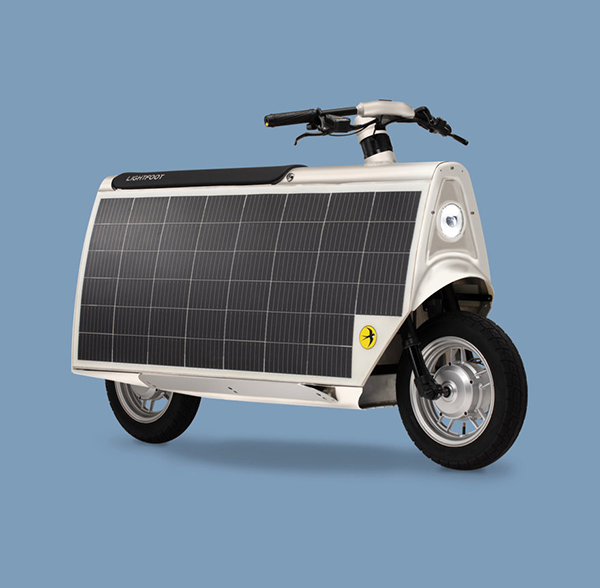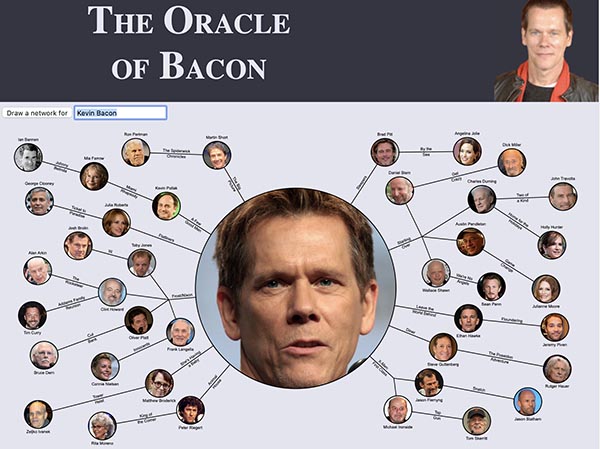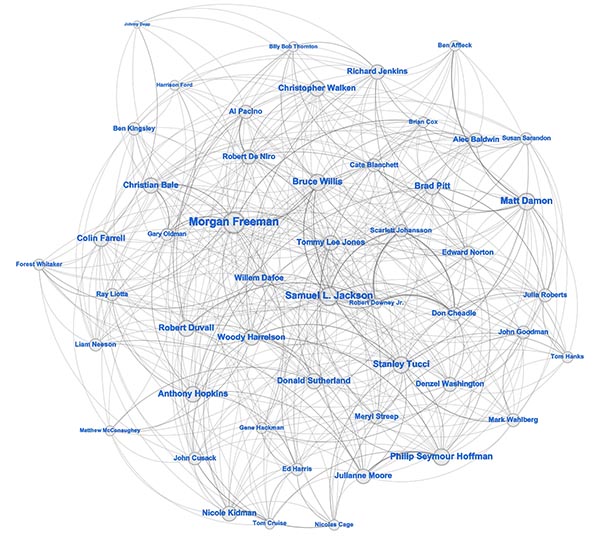
AI-Yi-Yi, Part the Infinity: Sold!
A couple of weeks ago, we caught up with Ai-Da, the robot painter (that is, she is a robot who paints, not someone who paints robots) and that a portrait she did of Alan Turning was going up for auction at Sotheby’s, where it was expected to sell for between $120,000 and $180,000. What did it actually go for? Via ARTNews:
On November 7, the artwork A.I. God. Portrait of Alan Turing (2024) by the humanoid robot artist Ai-Da sold for $1,084,800 during the auction house’s Digital Art day sale. There were 27 bids for the portrait of mathematician and computer scientist Alan Turing, which was created using Ai-Da Robot’s AI algorithms. The 64-inch by 90-inch mixed media on canvas also had a third-party guarantee.
Of course, not every AI-powered robot artist will be this fortunate. As more appear, not all of them will be successful and at some point a market for “starving robot artist” paintings will emerge. Or their work will be festooning the walls of the hotels of the future—hotels at which only allow robots will be allowed to stay.
Endlessly Typing
There is a theorem called “the infinite monkey theorem” which states that if a monkey hits the keys of a typewriter at random an infinite number of times, eventually the monkey will type out the entire works of Shakespeare. We’ve also heard variations that involve an infinite number of monkeys and an infinite number of typewriters, but the real question is who is going to clean all those typewriters?
Anyway, the monkey’s work could possibly be made a little easier if the keyboard was a Möbius Strip. And, yes, via Core 77, there is in fact such a keyboard, proposed by Google Japan:

Mind you, this is actually a practical joke.
“Our continuous efforts to develop the keyboard have always focused on surface level problems,” the engineering team write. ‘But what if we need a keyboard with a twist, one that turns the problem space outside-in?”

The video starts off fairly deadpan but gets delightfully sillier.
The monkeys would love it, though.
Taking a Powder
Shampoo. An essential purchase for a good number of us, at least so far. But, when you think about it, a sustainability nightmare. A constant stream of single-use plastic bottles that, sure, can possibly be recycled, but even so, that’s still a lot of plastic. But via Core77, a cool idea for sustainable packaging for shampoo starts with the premise that it doesn’t really need to be sold in liquid form. Enter Small Wonder, a company that aims to produce salon-grade, powdered beauty care products—while simultaneously reducing or eliminating single-use plastic containers.
Traditional shampoo is 75%–85% water, with the remaining volume made up of active ingredients. Powder concentrates are the opposite: they are 100% active ingredients and no water. Consumers simply add water to Small Wonder’s powder in the shower, eliminating the need to ship the one thing everyone already has in their shower—water. Rubbing both wet hands together for about 10 seconds will activate the powder into a thick and luxurious lather.
Small Wonder has teamed with a company called MINIMAL to design and develop a reusable, refillable package for powdered haircare products.
Small Wonder created a system that pairs a reusable powder-coated aluminum bottle with small, 100% recyclable refill tubes. Consumers receive the reusable bottle with their initial purchase, and subsequent purchases include a paper tube containing enough powder concentrate for 3–6 months of daily use. With Small Wonder, less truly is more—less waste, more product.

Our reusable bottle includes a patented cap design that is a novel way to dose and dispense powder hair-care products. An internal silicone diaphragm seals the bottle, protecting the powder from the steamy shower environment, while allowing easy and consistent dispensing every time. The hourglass bottle design is not only colorful, playful, and iconic, but also functional. The bottle opening faces down and the top surface is domed. These features discourage upside-down storage, which might lead to water pooling around the opening and leaking into the powder.
Dunno, though: $38 for the initial bottle and $30 for a refill (you can “subscribe” for a couple bucks less, if subscribing to shampoo is something you would be inclined to do). As per the comments to the article, now that we are aware that there are other kinds of powdered or dry shampoos with more sustainable packaging, that may be worth investigating.
Graphene Inks Up
Was it a good week for graphene news? It’s always a good week for graphene news! A new graphene-based ink for printed electronics. From (who else?) Graphene-Info:
Danish Graphene wanted to develop graphene in ink form to use it for printed electronics, where surfaces are coated with electrical circuits. Therefore, they sought help in a MADE material demonstration project, where they received assistance from the Danish Technological Institute. Graphene inks could be used in smart wearables, such as intelligent t-shirts that can detect small electrical impulses and thus track your pulse, or in training shoes that can analyze your running pattern.
…With a so-called proof of concept in hand, Danish Graphene is now ready to proceed with development to approach a market-ready product.
“We also need to look at how the ink can be integrated into commercial applications. We know that the ink is particularly well-suited for smart wearables, as these applications require high electrical conductivity, and not least because graphene, unlike other materials, is not harmful to the skin”, Kristian Birk Buhl concludes.
Razr Boy
Remember the Motorola Razr? Launched in 2004, it was the model that dominated the cellphone market in the pre-iPhone 2000s. What undeniably was its killer app was its design. The Verge pays tribute to the Razr.
The design innovatively revitalized Y2K Futurism pop culture and is even now fondly remembered as a figurehead for the “Chromecore” and “McBling” aesthetics.
McBling? Is that what you would get in a high-end Happy Meal? We continue.
It seemingly prioritized fashion over function, and that felt desirably fresh compared to the typical blobs of chunky plastic that had become commonplace (looking at you, Nokia 1100). Motorola’s former head of design, Jim Wicks, once told The Verge that the company had intentionally set out to create something that “would cut against everything everyone else was doing with handsets at the time.”
And it wasn’t just design for the sake of design. Function followed form.
The razor-thin handset lived up to its namesake. It was just 10mm thick, around half the size of most phones at that time. It was also much wider than its competitors, to make enough room for a larger, super-flat keypad that could be used without hitting the wrong keys. The case was partially constructed from metal and glass for added rigidity. That, along with its backlit and laser-etched aluminum keypad, made it look like something taken right out of a sci-fi movie.

And while the software was not very good, that didn’t seem to matter. Not did the $500 price tag—which was pretty steep for a phone in 2004. But that didn’t matter either.
The luxurious price may have actually boosted the Razr’s status. The original Razr was launched to a crowd of fashion journalists, not tech bloggers, at the Arken Museum of Modern Art in Copenhagen. The device was then cleverly marketed as a celebrity must-have, promoted by everyone from Paris Hilton to Bono. Meryl Streep used one as Miranda Priestly in The Devil Wears Prada, as did Jack Shephard in season 3 of Lost. You could eventually buy a Razr in almost any color to best match your personal style and identity.
Needless to say, we never had one.
To the Moon!
Here’s a thought question. A weird one, but a thought question nonetheless. If everyone on Earth aimed a laser pointer at the moon simultaneously, would it change color? Well, Randall Munroe of xkcd and Henry Reich of MinutePhysics, as part of their “What If?” series, sought to find out. The first problem is, obviously, that not everyone on Earth can see the moon at the same time, and gathering everyone together in one spot would not be practical. Since 75% of the world’s population lives between 0 and 120° east longitude (Central Europe, most of west Asia including India, the Middle East, and Africa) so they figured out the best opportunity would be when the moon is over the Arabian Sea. They also chose the moon when it is quarter full so the effect can be compared between light and dark sides.
First off, though, would a laser pointer be powerful enough to hit the moon? They say that a standard five milliwatt (mW) red pointer would, although the beam would get a little spread out by the time it got there. But, ultimately, the end result? Nada. The light from the sun reflecting off the moon completely overpowers the laser pointers. Even if everyone switched to 1 W lasers—which are very very very dangerous—still no visible impact.
They proceed to go increasingly power crazy (at one point giving everyone the spotlight at the top of the Luxor Hotel in Vegas with a giant lens attached) but the upshot is that it is well nigh impossible for Earth-based illumination to change the color of the moon. By the end, they are vaporizing bits of the lunar surface and pushing the moon away from the Earth. Needless to say, don’t try this at home.
Scoot
Well, OK, here’s an intriguing idea…on paper (or screen): a solar-powered motor scooter. Says Core 77:
Otherlab, a sort of incubator/skunkworks, unveiled this aluminum-framed Lightfoot scooter.
It has a battery that the company says will provide up to 37 miles of range—but also has solar panels that will allow it to add an additional 18 miles of range. And then you have a look at it…

It being a scooter, it would be difficult to come up with some other way of adding solar panels, but still…you’d have to have a high embarrassment threshold to be seen in public on that. We’d give it a go…
A steal at $4,995?
I Love Lucid
Are you interested in “lucid dreaming”? (Heck, some of us can’t manage “lucid waking” half the time…) But if you are, there is, actually, an app for that. First, though, what is lucid dreaming? Apparently, it is dreaming whilst being aware that you are dreaming while you are still asleep. And this is helpful…how? Says PsyPost:
Lucid dreaming has drawn increasing public interest for its potential benefits, including enhancing creativity, overcoming nightmares, and providing a space for personal growth and skill practice. Traditional techniques for inducing lucid dreams involve cognitive exercises, such as keeping a dream journal, performing reality checks, and practicing intention-setting before sleep.
In a recent study published in Consciousness and Cognition, researchers at Northwestern University demonstrated that a smartphone app “using sensory cues can significantly increase the frequency of lucid dreams.”
The researchers wanted to explore whether a simplified, app-based approach using Targeted Lucidity Reactivation—a method previously successful in a controlled lab setting—could be adapted for use outside the lab with minimal technical requirements.
“Targeted Lucidity Reactivation”—we could use that after some of the presentations we’ve attended.
In Targeted Lucidity Reactivation, participants undergo training to associate a sound cue—such as a tone or melody—with becoming aware that they are dreaming. This same sound is then played during sleep to prompt lucidity within a dream, leveraging the brain’s ability to recognize the cue and reawaken a state of self-awareness while dreaming.
Ultimately:
The combined results from both experiments support Targeted Lucidity Reactivation’s potential as an accessible, smartphone-based method for promoting lucid dreaming. While the cues showed a clear benefit, the study also highlighted challenges, such as the potential for cues to disrupt sleep if mistimed, since the app could not detect when participants entered rapid eye movement (REM) sleep.
What would be more worrying would be promoting lurid dreaming.
Bringing Home Bacon
Surely you’ve heard of the “Six Degrees of Kevin Bacon,” also known as Bacon’s Law, or the Oracle of Bacon—a game that involves trying to connect other celebrities to Kevin Bacon in less than six steps. Hence the Oracle:

For example:
Kate MacCluggage was in Are You There God? It's Me, Margaret with Jim France, who was in Selma with Dylan Baker, who was in Planes, Trains and Automobiles with…Kevin Bacon.
Even more improbably, Marilyn Monroe was in Let's Make It Legal with Robert Wagner, who was in Wild Things with…Kevin Bacon.
As Boing Boing points out:
It’s a miracle of science—one that has confounded mathematicians and philosophers alike for eons. How does it work? they wonder. Why is Kevin Bacon such a central connection to the entire universe?
Well, now there is data.
In a recent installment of the Stat Signifiant newsletter, Californian data scientist Daniel Parris has attempted to unravel the great mystery of the Oracle of Bacon—largely by graphing the film roles of pretty much everyone ever.
Can one get grant money for this kind of thing? Anyway, Parris writes:
We can build a network featuring every actor in Hollywood and then calculate which figures are most central to the film industry's casting graph. Below is an example network of the 50 most connected actors in entertainment (to use more than 50 examples would render the visual unreadable). The actors (nodes) that are largest and most central, like Morgan Freeman and Bruce Willis, are ideal fodder for the Kevin Bacon game—a cheat code for connecting disparate careers via extensive movie credits.

When we calculate our centrality metric for every actor in the film industry, our top scorers are prolific performers who have appeared in numerous ensemble projects (which is not surprising at all).
…Kevin Bacon is #64 in our extended rankings—he is central but not the most central. There is an argument that this is the right amount of connectedness for optimal Bacon gameplay. Picking the game's titular figure comes with a Goldilocks problem: you want someone well-connected but not too well-connected so as to allow for some strategy. Or at least that's how I'm choosing to interpret this data point.
We somehow have a feeling every human on Earth could connect themselves to Kevin Bacon in six steps or less.
Pando Mime
What is the world’s oldest organism? (Some mornings, it feels like we are.) Via Nature, scientists have determined that a good candidate is a quaking aspen tree (Populus tremuloides) in Utah called Pando. Pando—“I spread” in Latin—has been determined to be between 16,000 and 80,000 years old. Quite a range, sure, but after a certain age, “really, really, horribly old” is as specific as you need to get. At any rate, it is among the oldest living organisms on Earth.
And it’s not only really old, it’s also really big.
Pando…consists of some 47,000 stems that cover an area of 42.6 hectares in Utah’s Fishlake National Forest. Because of the way the plant reproduces, this collection of aspens is technically all one tree, supported by a single, vast root system. Pando is triploid, meaning that its cells contain three copies of each chromosome, rather than two. As a result, Pando cannot reproduce sexually and mix its DNA with that of other trees, and instead creates clones of itself.
So believe it or not, this is all essentially one tree:

After removing variants that were found in both Pando and neighbouring trees, as well as mutations found in just one sample, the researchers were able to review nearly 4,000 genetic variants that had arisen as Pando cloned itself repeatedly over millennia.
Analysing the patterns of these mutations revealed surprising results. “You would expect that the trees that are spatially close are also closer genetically,” says Pineau. “But this is not exactly what we find. We found a spatial signal, but that is much weaker than what we expected.” Physically close trees did share more similar mutations than those that were far apart — but only slightly more. However, over a smaller scale of 1–15 metres the trend was stronger, with stems that were closer together having significantly more shared mutations. Pando covers an area of more than 40 hectares, “but it almost looks like it’s a well-mixed pot of genetic information”, says Ratcliff.
Trees. Go figure.
Sandwich Board
Looking to change up your lunchtime? Try some “sandwiches from history.” Via Atlas Obscura, a new book by sandwich maven Barry Enderwick compiles 100 sandwiches from throughout history. Some sound pretty good. Some…not so much.
There’s the 1936 banana, cheese, pickle sandwich (“I thought it was going to be weird, but it’s not bad actually”) and the 1926 Crisco sandwich, made with creamed vegetable shortening on white bread “like some evil frosting,” he says. “You could hork it down.”
High praise indeed.
… The sandwiches themselves, sourced from the last century of cookbooks, are a mix of international favorites, family recipes, old-school clunkers, and the occasional outstanding flavor combination. Much of the project’s charm hinges on Enderwick himself, a marketing executive by day who posts about sandwiches with both earnestness and unfailing good humor.
As one would expect, the idea of the sandwich has evolved over time.
Early on, the sandwich was not intended as a meal. It was more like a snack. When you start to get into the ’40s, ’50s, they start to get a little bit more substantial. Then by mid-century, you got these four-deckers.
There is a recipe in my cookbook that uses four slices of bread. This was adapted from Good Housekeeping’s Book of Breads and Sandwiches from 1958. It’s called the “Sophisticated Club Sandwich,” and it is wild, but shockingly good. It has American cheese, ham, pineapple, peanut butter, unsweetened coconut, bacon, and avocado.
Oh, we don’t know…
Mothers of Advention
Advent is almost upon us, a time of great anticipation. No, not for That (at least not just yet), but for Aldi’s Advent calendars, which were released last week. Via (who else?) Food & Wine:
There will be as many as 20 different calendars offered this year, filled with either chocolate, wine, or other treasures. The press release notes that the chocolate, wine, and cheese calendars this year are designed to complement one another, and thus, “customers are encouraged to purchase all three calendars together for the ultimate pairing experience.”
Uh huh. Of course, if you strategize properly and aren’t too fussy about them just being for Advent, you could conceivably make the lot of them last almost two years.
And if you’d like to buy something a little more, shall we say, festive, there are plenty of alcoholic options available, too. Choose from “countdown”-themed variety packs of wine, sparkling wine, cider, or even Irish cream, a category so specific that it’s hard to imagine 12 different riffs on it. (Evidently Strawberry, Sugar Cookie, and Raspberry Cheesecake Irish cream are all on offer.)
The article highlights a few of them, but for the wine lover:
The most expensive calendar is also one of the most intriguing: the Wine Advent Calendar ($59.99), which contains virtually every variety of wine that the average consumer can name. There’s Cabernet Sauvignon, Chardonnay, Grüner Veltliner, Zinfandel, red blends, white blends, Syrah, Merlot…
Sometimes that’s the only way to get through the holidays…
This Week in Printing, Publishing, and Media History
November 11
1675: Gottfried Leibniz demonstrates integral calculus for the first time to find the area under the graph of y = ƒ(x).
1821: Russian novelist, short story writer, essayist, and philosopher Fyodor Dostoyevsky born.
1855: Danish philosopher, author, and poet Søren Kierkegaard dies (b. 1813).
1922: American novelist, short story writer, and essayist Kurt Vonnegut born.
November 12
1945: Canadian singer-songwriter, guitarist, and producer Neil Young born.
1980: The NASA space probe Voyager I makes its closest approach to Saturn and takes the first images of its rings.
1990: Tim Berners-Lee publishes a formal proposal for the World Wide Web.
November 13
1850: Scottish novelist, poet, and essayist Robert Louis Stevenson born.
November 14
1840: French painter Claude Monet born.
1851: Herman Melville’s novel Moby-Dick is published in the U.S.
1889: Pioneering female journalist Nellie Bly (aka Elizabeth Cochrane) begins a successful attempt to travel around the world in less than 80 days. She completes the trip in 72 days.
1916: American screenwriter and producer Sherwood Schwartz born.
1922: The British Broadcasting Company begins radio service in the United Kingdom.
1952: The first regular UK Singles Chart is published by the New Musical Express.
1967: American physicist Theodore Maiman is given a patent for his ruby laser systems, the world’s first laser. No word if he ever pointed it at the moon.
November 15
1926: The NBC radio network launches with 24 stations.
1968: The Cleveland Transit System becomes the first transit system in the western hemisphere to provide direct rapid transit service from a city’s downtown to its major airport.
1971: Intel releases the world’s first commercial single-chip microprocessor, the 4004.
November 16
534: Justinian I, who was an Eastern Roman (Byzantine) emperor in Constantinople, approves and publishes the second and final revision of the Codex Justinianus.
1889: American director, producer, and playwright George S. Kaufman born.
1904: English engineer John Ambrose Fleming receives a patent for the thermionic valve (aka the vacuum tube).
1914: The Federal Reserve Bank of the United States officially opens.
1938: LSD is first synthesized by Albert Hofmann from ergotamine at the Sandoz Laboratories in Basel.
November 17
1749: French chef Nicolas Appert born. He invented the principle of canning.
1790: German mathematician and astronomer August Ferdinand Möbius born. (It’s not true that his life had no beginning and no end.)
1839: Oberto, Giuseppe Verdi’s first opera, opens at the Teatro alla Scala in Milan, Italy.
1944: Retired college basketball coach Jim Boeheim born.
1947: American scientists John Bardeen and Walter Houser Brattain observe the basic principles of the transistor, a key element for the electronics revolution of the 20th century.
1968: Viewers of the Raiders–Jets football game in the eastern United States are denied the opportunity to watch its exciting finish when NBC broadcasts Heidi instead, prompting changes to sports broadcasting in the U.S.
2019: The first known case of COVID-19 is traced to a 55-year-old man who had visited a market in Wuhan, Hubei Province, China. And thus it began…















Discussion
Only verified members can comment.